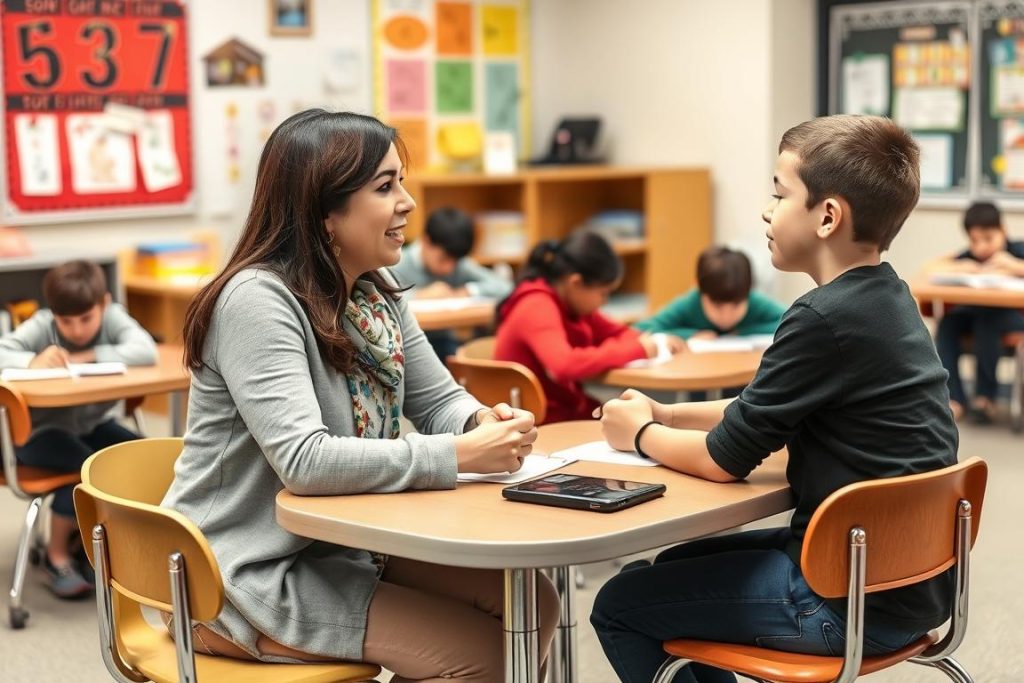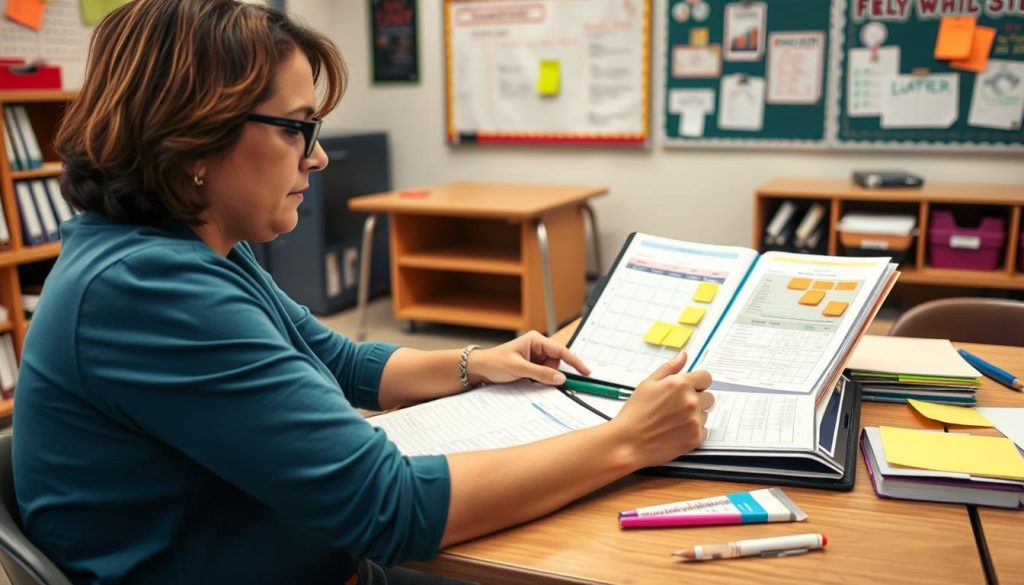In this comprehensive guide, we’ll explore nine proven discipline strategies that can transform your classroom management approach. These techniques are designed to enhance your teacher skills while creating a respectful, productive learning environment where all students can thrive. Let’s dive into these practical approaches that have been tested and refined by experienced educators across the country.
Why Effective Strategies for All Students Matter
Before diving into specific techniques, it’s important to understand why developing strong discipline approaches is fundamental to your teaching practice. Research consistently shows that well-managed classrooms lead to better academic outcomes. According to a study by the American Psychological Association, effective classroom management is directly linked to higher student achievement and improved behavior.
Developing these teacher skills doesn’t just benefit your students—it also reduces your stress and prevents burnout. When you have reliable strategies to address behavior issues, you can focus more energy on what matters most: teaching. Additionally, these approaches help students develop self-regulation skills they’ll carry throughout their lives.
The most successful teachers recognize that discipline isn’t about punishment but rather about teaching students to make better choices. By implementing effective strategies for all students in your classroom, you create an environment where learning can flourish. These approaches work across grade levels and with diverse student populations, making them invaluable tools in your teaching arsenal.
Enhance Your Teacher Skills
Looking for professional development opportunities that focus on classroom management? Discover resources designed specifically for K-12 educators.
1. Positive Reinforcement: An Effective Strategy for All Age Groups
Positive reinforcement remains one of the most powerful tools in a teacher’s discipline toolkit. This approach focuses on acknowledging and rewarding desired behaviors rather than punishing unwanted ones. When students receive recognition for making good choices, they’re more likely to repeat those behaviors in the future.
Implementing positive reinforcement requires consistent attention to student behavior and immediate acknowledgment when you see something positive. This might include verbal praise, special privileges, or token systems that students can redeem for rewards. The key is ensuring that reinforcement is:
- Specific – Tell students exactly what behavior you’re praising
- Timely – Provide reinforcement as soon as possible after the behavior
- Genuine – Be sincere in your praise
- Appropriate – Match the reinforcement to the student’s age and preferences
For younger students, simple rewards like stickers or extra free time can be highly motivating. Teenagers might respond better to privileges like choosing a class activity or earning recognition in front of peers. The beauty of positive reinforcement is that it can be tailored to work with any age group, making it truly one of the effective strategies for all students in your classroom.
Developing this teacher skill takes practice, but the results are worth it. Students who receive regular positive feedback develop stronger self-esteem and are more motivated to meet classroom expectations. Remember that the goal isn’t to bribe students but to help them internalize good behavior by associating it with positive outcomes.
2. Clear Expectations and Consistent Consequences
Students thrive when they understand exactly what’s expected of them. Establishing clear, consistent expectations is a fundamental teacher skill that creates security and predictability in your classroom. When students know the rules and the consequences for breaking them, they can make informed choices about their behavior.
Start the school year by collaboratively developing classroom rules with your students. This gives them ownership in the process and increases buy-in. For each rule, clearly outline:
- What the rule means in specific, observable terms
- Why the rule is important for everyone’s learning and safety
- What happens when the rule is followed (positive consequences)
- What happens when the rule is broken (negative consequences)
The most important aspect of this strategy is consistency. When consequences are applied unpredictably, students become confused and may test boundaries more frequently. Consistent follow-through builds trust and shows students that you mean what you say.
For this approach to be one of your effective strategies for all students, make sure your expectations are developmentally appropriate. Elementary students might need simpler, more concrete rules, while teenagers can understand more nuanced expectations. Regardless of age, all students benefit from knowing exactly where they stand.
“The most effective classroom managers don’t simply impose rules and consequences on students; they explain the reasoning behind their expectations and involve students in the process.”
Dr. Robert Marzano, Educational Researcher
3. Relationship Building: The Foundation of Effective Strategies for All
Perhaps the most powerful discipline strategy isn’t a technique at all—it’s the quality of relationships you build with your students. When students feel connected to their teacher and believe you care about them as individuals, they’re more motivated to meet expectations and less likely to engage in disruptive behavior.
Building strong teacher-student relationships requires intentional effort and is a critical teacher skill worth developing. Some effective approaches include:
- Greeting each student by name at the door
- Learning about students’ interests outside of school
- Sharing appropriate personal stories that students can relate to
- Attending extracurricular events when possible
- Creating opportunities for one-on-one conversations
- Showing genuine interest in students’ thoughts and opinions
Research consistently shows that positive teacher-student relationships are linked to better behavior and academic outcomes. According to a study published by Edutopia, students who feel connected to their teachers experience less stress and are more engaged in learning.
This relationship-building approach works as one of the effective strategies for all students because it addresses a universal human need for connection. From kindergarteners to high school seniors, all students want to feel seen, heard, and valued by the adults in their lives.

Strengthen Your Classroom Management
Discover comprehensive resources for implementing effective discipline strategies in your classroom.
4. Restorative Practices: Teaching Responsibility
Moving beyond traditional punishment models, restorative practices focus on repairing harm and rebuilding relationships when rules are broken. This approach teaches students to take responsibility for their actions and understand how their behavior affects others—a valuable life skill that extends far beyond the classroom.
Implementing restorative practices requires developing specific teacher skills, including facilitation of difficult conversations and creating safe spaces for honest dialogue. The core components include:
- Restorative questions that prompt reflection (What happened? Who was affected? How can we make things right?)
- Peace circles where students can share perspectives in a structured format
- Collaborative problem-solving to address conflicts
- Natural consequences that relate logically to the behavior
Unlike punitive approaches that may temporarily suppress behavior through fear, restorative practices help students develop empathy and conflict resolution skills. This makes it one of the truly effective strategies for all students, as it addresses the root causes of behavior rather than just the symptoms.
For younger students, restorative practices might involve simple conflict resolution conversations with teacher guidance. Older students can engage in more complex restorative conferences and take greater ownership of the process. Regardless of age, the focus remains on learning from mistakes rather than simply paying for them.
“When we respond to misbehavior with punishment alone, we miss an opportunity to teach students the social and emotional skills they need to navigate relationships successfully.”
Dr. Jane Nelsen, Author of Positive Discipline
5. Preventative Approaches: Proactive Effective Strategies for All
The best discipline problems are the ones that never happen in the first place. Preventative approaches focus on creating classroom environments and routines that naturally minimize disruptive behavior. This proactive stance requires foresight and planning but saves significant time and energy in the long run.
Developing preventative teacher skills involves learning to anticipate potential problems and address them before they escalate. Key preventative strategies include:
- Strategic classroom arrangement that minimizes distractions and facilitates movement
- Engaging lesson planning that keeps students actively involved
- Clear routines and procedures for transitions and common activities
- Regular opportunities for movement and brain breaks
- Differentiated instruction that meets diverse learning needs
- Monitoring student engagement and intervening early when attention wanes
These preventative approaches work as effective strategies for all students because they address common triggers for misbehavior: boredom, confusion, physical discomfort, and unmet needs. By creating environments where students are engaged and supported, you naturally reduce the likelihood of discipline issues.
For elementary classrooms, this might mean incorporating more movement and hands-on activities throughout the day. In middle and high school settings, it could involve chunking instruction into manageable segments and providing choice in learning activities. The key is understanding your specific students and designing your classroom environment to set them up for success.

6. Social-Emotional Learning Integration
Many behavior issues stem from underdeveloped social and emotional skills. By explicitly teaching these skills as part of your curriculum, you address the root causes of misbehavior while equipping students with valuable life competencies. Social-emotional learning (SEL) focuses on helping students understand and manage emotions, set goals, show empathy, establish positive relationships, and make responsible decisions.
Integrating SEL into your classroom requires specific teacher skills, including modeling emotional regulation and facilitating meaningful discussions about feelings and social interactions. Effective approaches include:
- Regular class meetings to discuss social dynamics and problem-solve together
- Explicit instruction in identifying and naming emotions
- Role-playing scenarios to practice appropriate responses to challenging situations
- Calm-down corners where students can self-regulate when overwhelmed
- Conflict resolution protocols that students can follow independently
Research consistently shows that SEL integration improves both behavior and academic outcomes. According to a meta-analysis published in the journal Child Development, students who participated in SEL programs showed an 11-percentile-point gain in academic achievement compared to students who did not.
This approach works as one of the effective strategies for all students because social-emotional skills are universally valuable. Elementary students might focus on basic emotion identification and sharing, while older students can explore more complex concepts like perspective-taking and identity development. At every level, SEL provides students with tools to navigate social situations successfully.
Enhance Your SEL Teaching Skills
Access professional development resources focused on integrating social-emotional learning into your discipline approach.
7. Individualized Behavior Plans: Tailoring Effective Strategies for All
While classroom-wide systems work for most students, some require more individualized approaches to behavior management. Creating targeted behavior plans for students with specific challenges is an advanced teacher skill that can transform your most difficult discipline situations into success stories.
Effective individualized behavior plans are:
- Based on careful observation and data collection about the behavior
- Focused on identifying the function or purpose the behavior serves for the student
- Developed collaboratively with the student, parents, and relevant support staff
- Designed to teach replacement behaviors that meet the same need in appropriate ways
- Regularly reviewed and adjusted based on progress
The process typically begins with a functional behavior assessment (FBA) to understand what triggers the behavior and what rewards maintain it. This information guides the development of a behavior intervention plan (BIP) that addresses the specific needs of the student.
While this approach requires more initial time investment, it represents one of the most effective strategies for all students who struggle with behavioral challenges. By addressing the root causes of behavior rather than just the symptoms, you create lasting change that benefits both the individual student and the entire classroom community.

8. Culturally Responsive Discipline Approaches
Students come to our classrooms with diverse cultural backgrounds that influence their behavior, communication styles, and responses to authority. Culturally responsive discipline acknowledges these differences and adapts approaches to be effective and equitable for all students. This requires developing specific teacher skills related to cultural awareness and bias recognition.
Key elements of culturally responsive discipline include:
- Examining your own cultural lens and potential biases
- Learning about the cultural backgrounds of your students
- Recognizing that behavior norms vary across cultures
- Adapting communication styles to be effective with diverse students
- Ensuring that discipline practices don’t disproportionately impact certain groups
- Building authentic relationships with families from all backgrounds
Research shows that traditional discipline approaches often disproportionately impact students of color and those from lower socioeconomic backgrounds. Culturally responsive approaches help address these disparities by ensuring that all students are held to high standards while receiving the specific support they need to meet those standards.
This approach qualifies as one of the truly effective strategies for all students because it recognizes and values diversity while maintaining consistent expectations. By acknowledging cultural differences without lowering standards, you create an environment where all students can thrive.
“Effective discipline isn’t about treating all students the same; it’s about providing each student with what they need to succeed within a framework of clear, consistent expectations.”
Dr. Gloria Ladson-Billings, Researcher on Culturally Relevant Pedagogy
9. Parent-Teacher Partnerships: Collaborative Effective Strategies for All
The most successful discipline approaches extend beyond the classroom walls to include meaningful collaboration with families. When parents and teachers work together consistently, students receive clear, aligned messages about behavioral expectations. Building these partnerships is a vital teacher skill that pays dividends in improved student behavior.
Effective parent-teacher collaboration on discipline includes:
- Early communication about classroom expectations and procedures
- Regular updates on student behavior, both positive and challenging
- Collaborative problem-solving when issues arise
- Shared strategies that can be implemented at home and school
- Cultural sensitivity and respect for family values
- Recognition of parents as experts on their own children
The most successful partnerships begin with relationship-building before problems occur. When parents feel respected and included from the start, they’re more likely to be supportive partners when challenges arise. This proactive approach prevents the adversarial dynamics that can develop when communication only happens around negative incidents.
This collaborative approach works as one of the effective strategies for all students because it creates consistency between home and school environments. When students receive the same messages about behavior in both settings, they’re more likely to internalize expectations and develop self-discipline.

Strengthen Parent Communication
Access templates and resources for effective parent communication about discipline issues.
Implementing These Strategies in Your Classroom
Understanding these nine discipline approaches is just the beginning—the real challenge lies in implementing them effectively in your unique classroom context. Successful implementation requires developing specific teacher skills and a willingness to adapt strategies to meet the needs of your particular students.
Consider these implementation tips:
Start Small
Rather than trying to overhaul your entire approach at once, select one or two strategies to focus on initially. Master these before adding additional techniques to your repertoire. This prevents overwhelm and allows you to develop proficiency with each approach.
Be Consistent
Whatever strategies you choose, consistency is key. Students need to know that expectations and consequences remain the same from day to day. This predictability creates a sense of security that supports positive behavior.
Collect Data
Track the effectiveness of your approaches by collecting simple data on student behavior. This might include tallying specific behaviors before and after implementing a new strategy or noting patterns in when and where issues occur.
Reflect and Adjust
Regularly reflect on what’s working and what isn’t. Be willing to adjust your approach based on student responses and classroom dynamics. Effective discipline is responsive to the specific needs of your students.
Remember that becoming skilled at classroom management is a journey, not a destination. Even experienced teachers continuously refine their approach as they work with different students and encounter new challenges. The willingness to learn and adapt is perhaps the most important teacher skill of all.

Conclusion: Building Your Discipline Toolkit
Effective classroom management isn’t about finding a single perfect strategy—it’s about developing a diverse toolkit of approaches that you can apply flexibly based on the situation and the needs of individual students. The nine strategies outlined in this article provide a foundation for building that toolkit.
By incorporating these effective strategies for all students in your classroom, you’ll create an environment where positive behavior is the norm rather than the exception. Remember that discipline is ultimately about teaching, not punishing. When we approach behavior challenges as learning opportunities, we help students develop the self-regulation skills they’ll need throughout their lives.
Developing these teacher skills takes time and practice, but the investment pays tremendous dividends in classroom climate, student achievement, and your own professional satisfaction. As you implement these approaches, you’ll likely find that you spend less time managing behavior and more time doing what you love most—teaching.
Continue Your Professional Growth
Access comprehensive resources for implementing effective discipline strategies in your classroom. Enhance your teacher skills with professional development opportunities designed specifically for K-12 educators.
How long does it take to see results from these discipline strategies?
The timeline for seeing results varies depending on several factors, including the consistency of implementation, the specific needs of your students, and the strategies you choose. Some approaches, like clear expectations and positive reinforcement, may show immediate improvements in behavior. Others, like social-emotional learning and restorative practices, are more focused on long-term skill development and may take weeks or months to fully impact classroom behavior. The key is consistent implementation and patience—meaningful behavior change takes time.
What if I try these strategies and they don’t work for my students?
If you’re not seeing the results you hoped for, consider these possibilities: 1) You may need to give the strategy more time, as behavior change often isn’t immediate; 2) The implementation may need adjustment—small tweaks can make a big difference; 3) You might need additional support or resources to implement the strategy effectively; or 4) The particular approach may not be the best fit for your specific students. Remember that effective discipline is about finding the right combination of strategies for your unique classroom context, which often requires experimentation and refinement.
How can I balance individual student needs with whole-class management?
This common challenge requires a tiered approach to discipline. Start with strong classroom-wide systems that meet the needs of most students. Then, provide additional support for small groups of students who need more structure or guidance. Finally, develop individualized plans for students with significant behavioral challenges. This approach allows you to maintain consistent expectations for all while providing the differentiated support that some students need. Remember that fairness in the classroom doesn’t mean everyone gets the same thing—it means everyone gets what they need to succeed.




